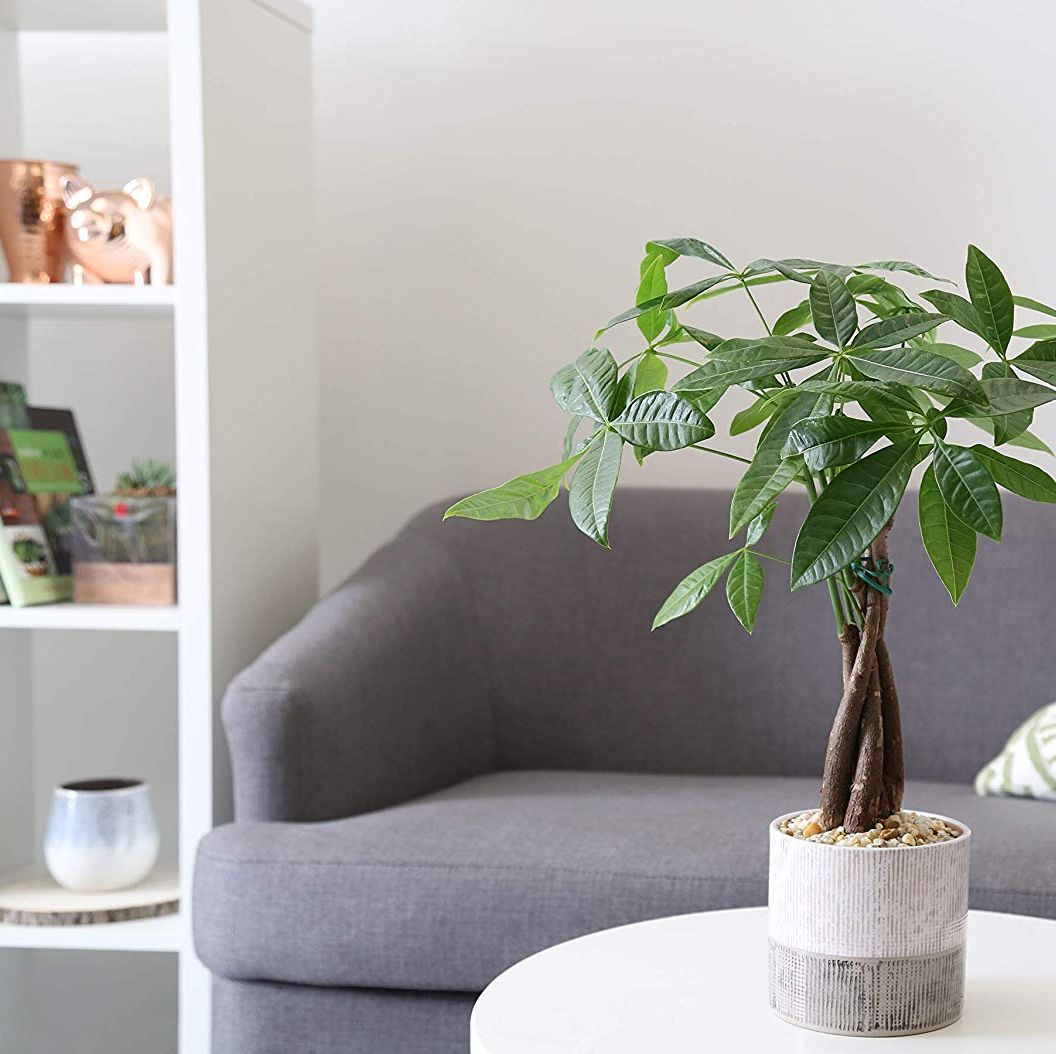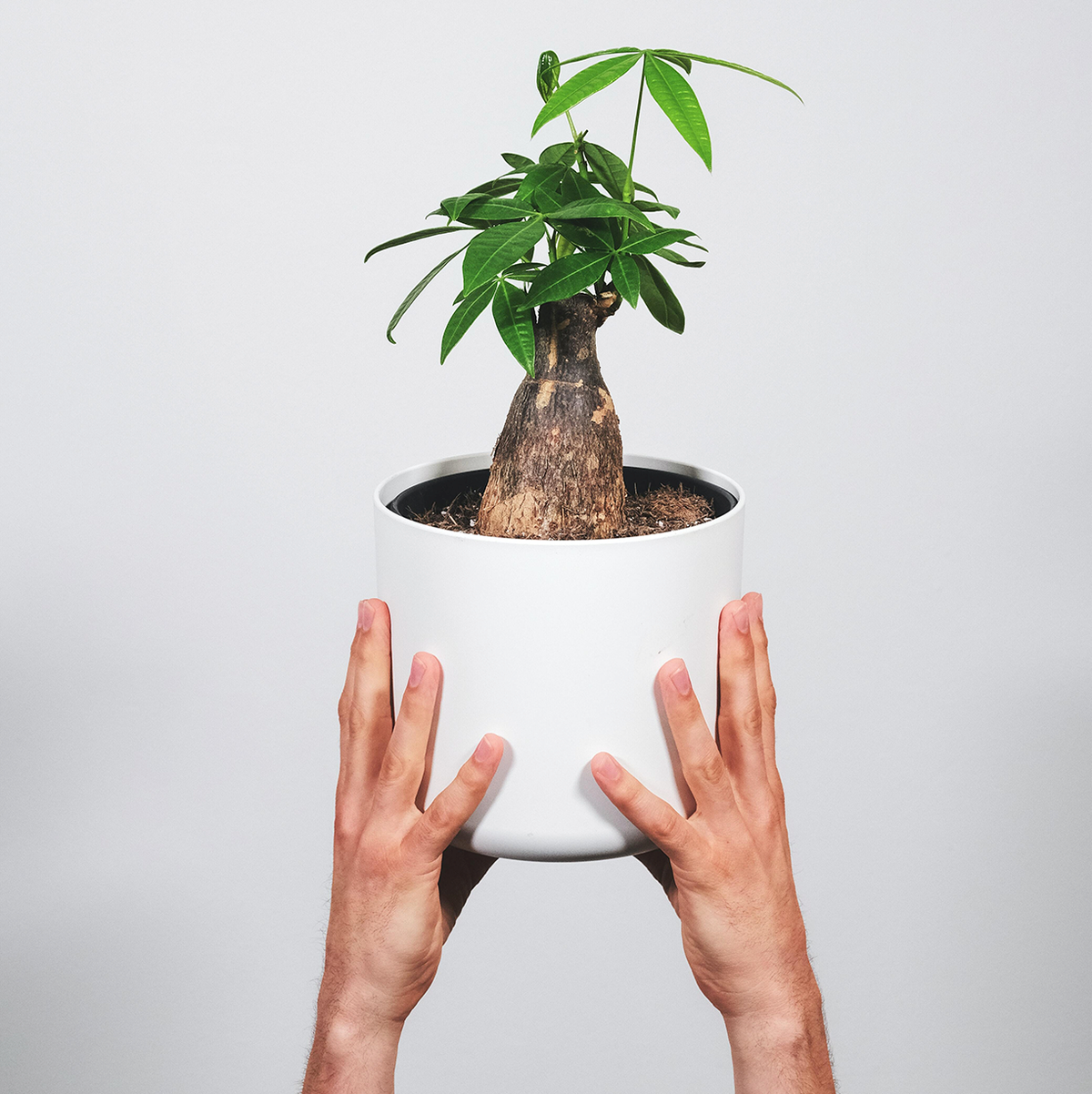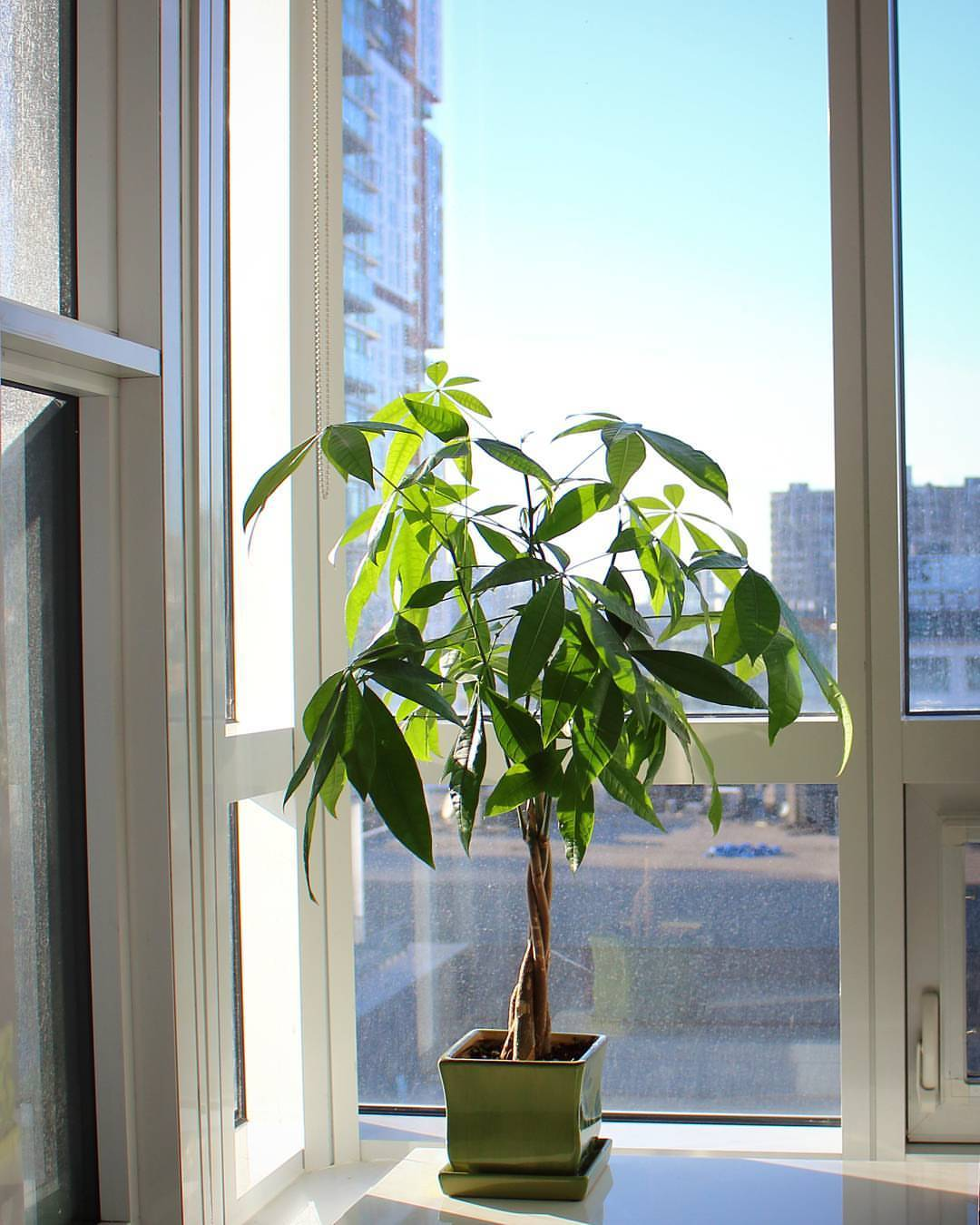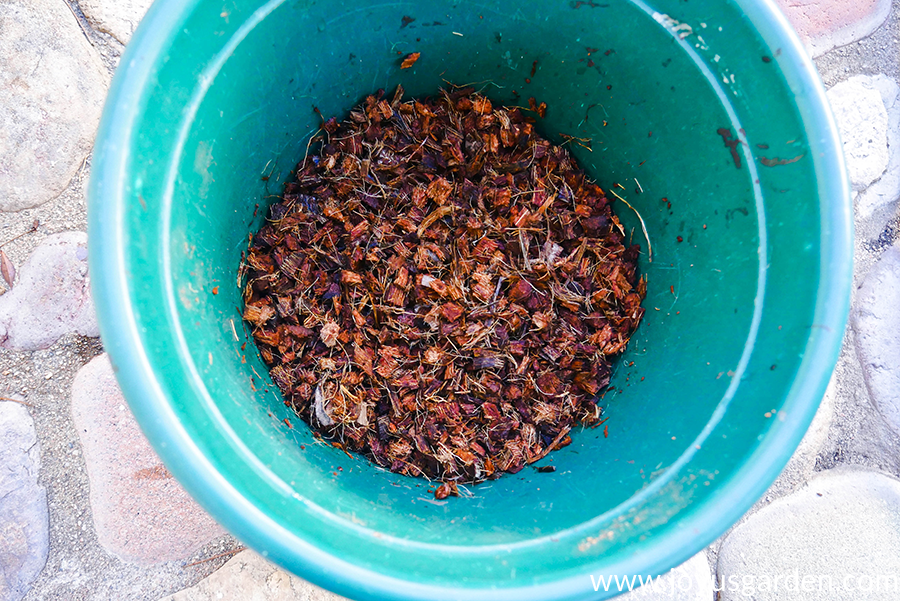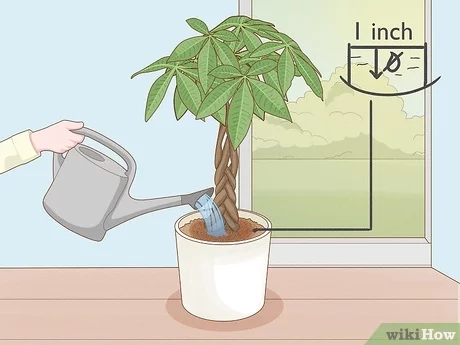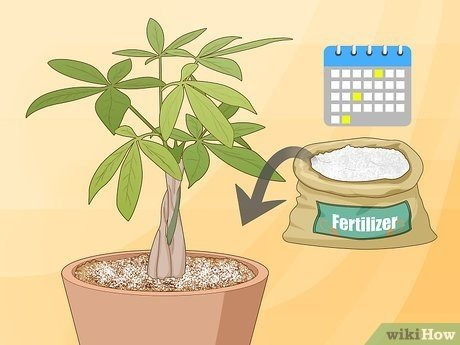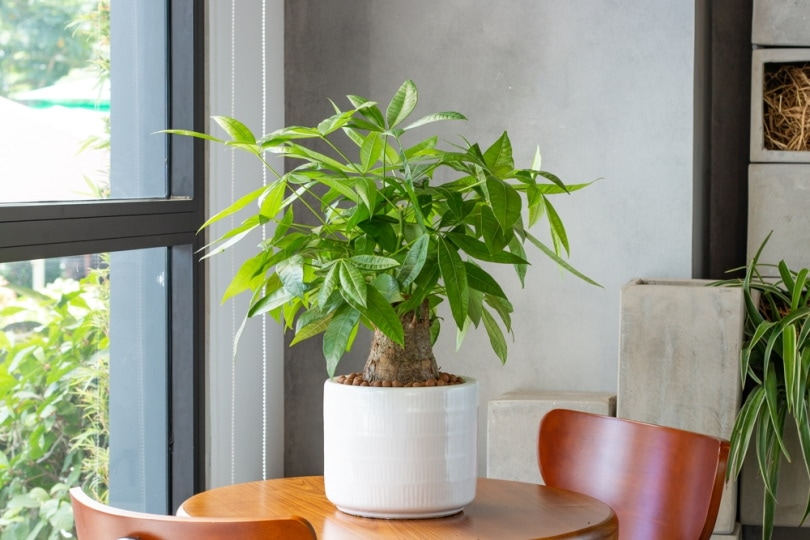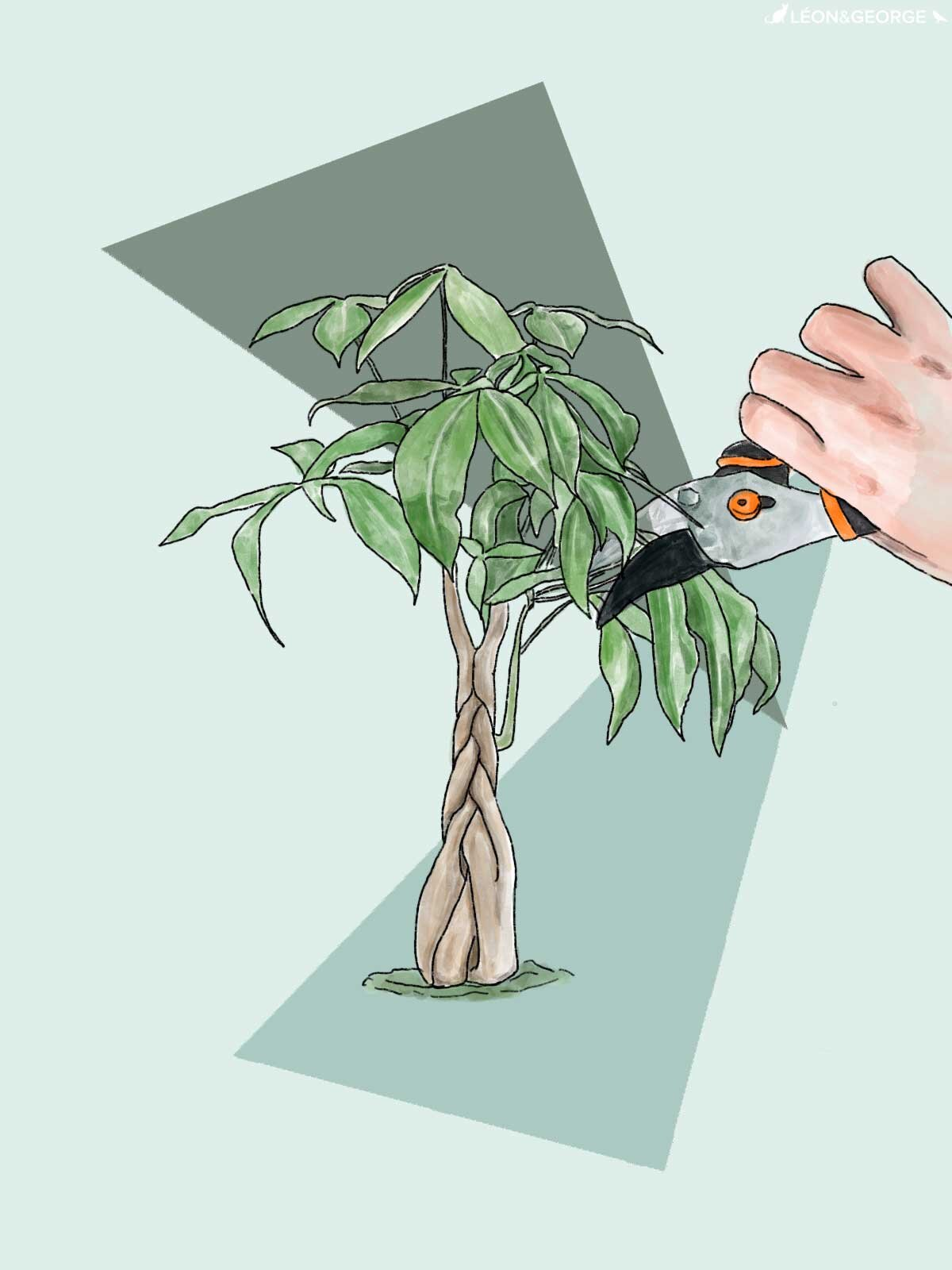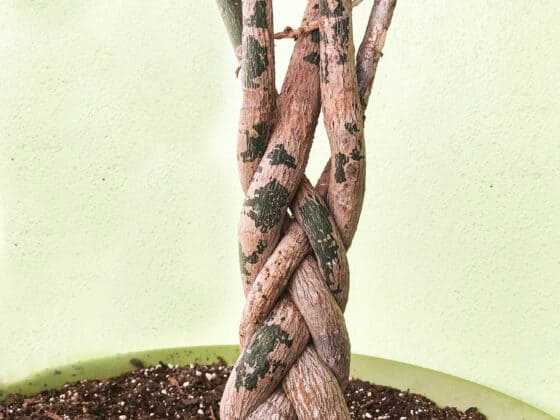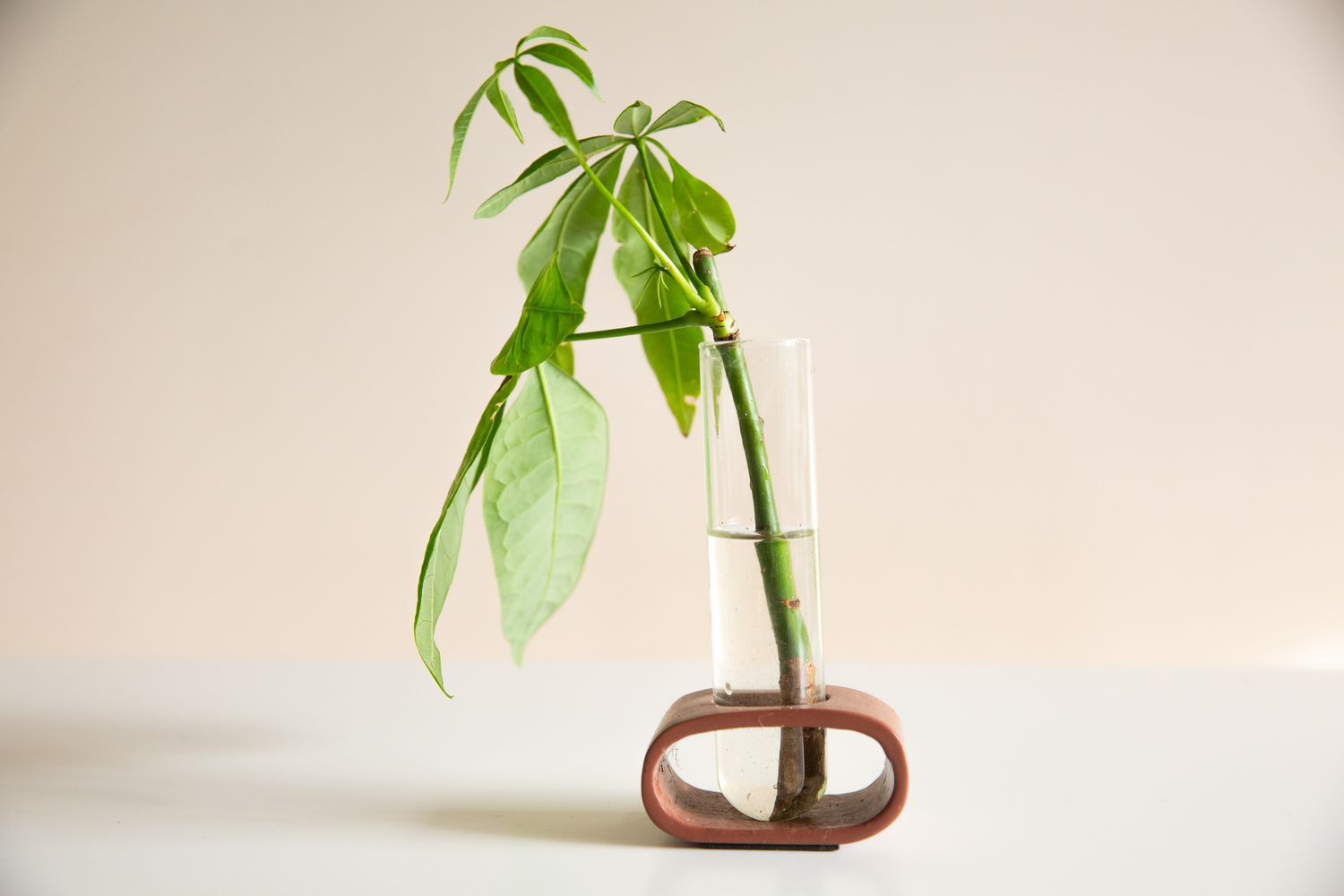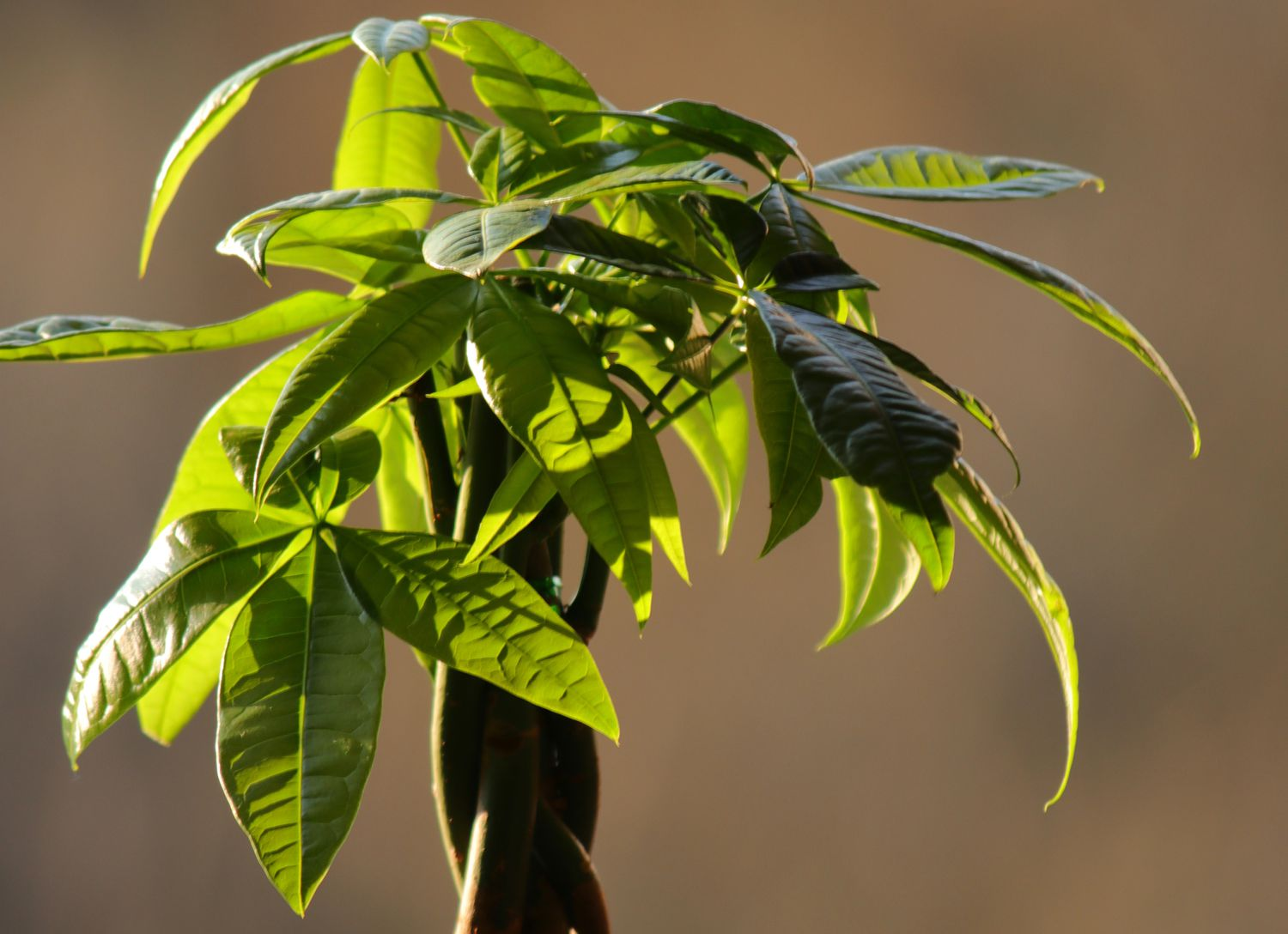HousePlantJoy is supported by our audience. When you purchase through one of our links, we may earn a small affiliate commission. As an Amazon Associate I earn from qualifying purchases. Your cost is not affected.
==================
Hey, plant enthusiasts! Let’s dive into the lush world of Pachira aquatica, commonly known as the money tree. Join me on a green adventure as we explore a comprehensive guide to growing and caring for money trees. We’ll explore the secrets to nurturing these botanical treasures, from cultivating the perfect environment to tending to their unique needs. Whether you’re a seasoned plant parent or a budding enthusiast, let’s uncover the tips and tricks to ensure your money tree thrives.
Money Trees
Photo by: House Beautiful
Let’s talk about the amazing money tree! Originating from the lush landscapes of Central and South America, this captivating plant has become a favorite among houseplant enthusiasts. Originally gaining popularity in Taiwan during the 1980s, the money tree found its way into homes worldwide, especially for those practicing feng shui, where it’s believed to bring positive chi or energy.
When you spot them in stores, these money trees are often sold as small plants with a unique braided trunk, typically featuring three, five, or seven stems. Interesting tidbit – the braiding happens when they’re young at the nursery and stays with them as they grow.
Indoors or outdoors, these trees are speedy growers, adding up to a remarkable 24 inches in height each year. The money tree also goes by various names across the globe, including Guiana chestnut, Malabar chestnut, saba nut plant, and the charming money tree bonsai.
So, if you’re thinking of adding a touch of green magic to your space, consider the money tree – a plant with roots in Central and South America that’s sure to bring a burst of positive energy and charm, whether as a regular money tree plant or a stylish money tree bonsai.
Guide to Successful Money Tree Care
Photo by: Good Housekeeping
Let’s talk about making your money tree feel right at home, whether chilling indoors or soaking up the sun outdoors. Growing and caring for money trees doesn’t have to be a big mystery. Here are the key things to remember when growing your money trees.
Light
Photo by: House Plant Journal
Let’s dive into the world of keeping your money tree happy with the perfect light setup. These green pals are all about that indirect light vibe with just a hint of direct sunlight magic.
Money Tree Outdoors:
If your money tree is soaking up the outdoor life, it’s cool with some direct sunlight. But here’s the trick—give them a little spin now and then. Like us, they need a break from that hot, direct sun.
Money Tree Indoors:
Now, for the indoor crew, it’s a whole different story. They vibe with bright to medium indirect sunlight and want it for at least six hours a day. If your place is playing hide-and-seek with the sun, no worries! Fluorescent light is like their trusty sidekick; they’ll thrive under it.
Oh, and a quick heads up—don’t immediately bombard your new money tree with too much direct sunlight. Let them ease into it like we would after a sunny day. Keep those light vibes on point, find a sunny window for them to enjoy, and your money trees will live their best, green lives!
Soil and Pot
Photo by: Joy Us Garden
It’s like finding the right spot for your plant buddy to flourish. These hardy trees are low-maintenance, so there is no need for fancy nutrient mixes. Grab a simple potting mix, and you’re set.
To ensure your money trees thrive, mix in peat moss with that standard potting soil. It’s like a nutrient boost for their root. Toss in some gravel or stones – the perfect combo for a well-draining potting mix.
When it comes to planting, go for a pot with drainage holes. These are like the superheroes preventing water from hanging around and causing root rot. Money trees aren’t fans of soggy roots, so let’s avoid that. These trees don’t have deep roots, so no need for a massive pot – just a few inches deeper than their roots is perfect.
Watering
Photo by: wikiHow
Caring for your money tree is like giving it a spa day for its roots. Water it every week or when the top inches of soil feel dry. When watering, drain the excess water in the sink or use a pebble tray under the pot. Avoid overwatering by letting the soil dry out completely between waterings – we want happy roots, not soggy roots. To steer clear of root rot, make sure the pot has proper drainage holes. With these simple caring-for-money tree tips, your plant buddy will thrive quickly!
Fertilizer
Photo by: wikiHow
Alright, listen for some top-notch tips on caring for your money tree! During the spring and summer, when it’s in full leaf-making mode, treat it to a monthly sip of liquid fertilizer. Come fall and winter, switch to a more laid-back schedule, offering liquid goodness every two months. And here’s the secret sauce: go for a half-strength mix of all-purpose houseplant fertilizer.
Temperature and Humidity
Photo by: House Grail
Alright, your money tree has a sweet spot when it comes to living its best life. It’s all about those mild temperatures and a bit of humidity love. Keep the thermometer between 65 and 75 degrees Fahrenheit, and keep it away from any sneaky drafts – warm or chilly.
When things dry in the spring and summer, consider adding a small humidifier or misting the leaves to keep your money tree fresh.
Pruning
Photo by: La Résidence
Let’s dive into the art of giving your money tree a little trim – it’s one of the essentials in caring for money trees routine. Pruning is your secret weapon whether you’re into braiding or bonsai vibes or want to prevent your green buddy from going full jungle mode.
Here’s the deal: snipping off those lower leaves not only keeps things tidy but also signals to the top, saying, “Hey, time to sprout some new leaves up here!” So, grab those pruning shears, and let’s keep your money tree looking sharp and thriving!
Braiding
Photo by: The Healthy Houseplant
Imagine having a cozy green party with your money tree trunks growing together in the pot. Take it slowly and gently, and start braiding or weaving them together as you fancy, giving your space an instant touch of botanical chic.
Here’s the secret sauce:
- Grab some cord or string.
- Give those braided trunks a loose tie at the top.
- Let them mingle.
As your plant stretches and grows, slide that string a bit higher. When you’ve achieved the braided perfection you envisioned for your money tree, it’s time for the grand reveal – remove the tie and let your uniquely styled braided money trees steal the spotlight!
Propagating
Photo by: The Spruce
Once you spot those new shoots, you’ve got the option to propagate your money tree family. Here’s the lowdown:
- Pick a stem roughly five inches long with a few leaves or leaf nodes on it. Get some sterilized sharp scissors or pruning shears for the snipping part.
- Hold that stem tight so it doesn’t do any wiggling, and then cut.
- Drop that freshly cut stem into some water to kickstart the root-growing process. It’s like giving your money tree a chance to sprout new roots.
- Once your plant has enough roots to stand on two metaphorical feet, transfer it to a mix of potting soil and plant food. It’s like giving your money tree a little boost to grow big and strong.
- After the transplant, keep the soil nice and moist for your budding money tree. Happy planting!
Common Problems in Money Trees
Photo by: Southern Living
Caring for money trees is a big deal; a key part of that is keeping tabs on their health. Getting familiar with the usual pests and diseases is like having a cheat code to understand if your green buddy is getting the right amount of TLC. Plus, it’s a cool way to stop any plant issues in their tracks before they even start.
Leaf Drop
If your money tree’s leaf-dropping game is strong, the main suspect is often overwatering. There could be other culprits, like those plants that are a bit picky about temps and dig chillin’ in indirect sunlight. We’re talking sneaky cold drafts, pesky pests, or maybe some repotting stress. Dodgy lighting and questionable potting soil can also play a part in the leaf-dropping drama.
So, if you catch your money tree shedding leaves out of the blue, let’s play detective. Ease it into its new surroundings if it’s been recently repotted, and give it a few days to settle in. Tweak the temperature and humidity settings if needed. Also, experiment with the watering and sunlight routine until your plant starts rockin’ that stable regrowth vibe.
Pests
So, here’s the deal with money trees – they’re like bug magnets for little sap-sippers, such as spider mites, mealybugs, whiteflies, and those pesky fungus gnats. These critters can turn your money tree’s leaves yellow and convince them to bail.
But fear not! If you’ve got a bug invasion, neem oil is your superhero. Just sprinkle some on the soil to give those pests a big “no thanks” sign. You can also give your money tree a little neem oil shower – spray it on the trunk and leaves to give aphids a not-so-comfy suffocating experience.
Now, if these bugs throw a wild party and things get seriously out of hand, it’s time to call in the big guns – pest control professionals. Let the experts handle the situation and keep your money tree bug-free and happy!
Root Rot
It’s like the sneaky villain of moist-loving plants, but fear not because there’s a key move to avoid root rot – finding that sweet spot between enough moisture and not drowning your plant.
So, picture this: your pot’s got those cool drainage holes, and it comes with a nifty tray to catch the water overflow. But here’s the deal – if that tray is small, your money tree might still have wet feet. No worries, though! After watering, you can play it smart by popping your money tree in the sink or on a tray of pebbles. Another option? Upgrade to a pot with a larger drainage tray, and you’re golden! Keep that soil happy, not soggy, and you’ll ace the game of how to avoid root rot.
Here’s an additional video on caring for your money trees
Money Tree (Pachira Aquatica) Care By: Epic Gardening
Keep Your Green Buddies Happy
There you have it – a comprehensive guide to growing and caring for money trees! We’ve covered everything from unraveling the intriguing origins of these green wonders to delving into the nitty-gritty of their ideal living conditions. Whether you’re a seasoned plant parent or just beginning your journey into indoor or outdoor gardening, these insights into money trees will elevate your botanical expertise. Armed with these tips and tricks, you’re well-equipped to provide the optimal environment for your money trees to thrive.
So, go ahead and embrace the joy of growing and caring for money trees. Whether you opt for the classic money tree or venture into bonsai styling, may your green companions bring positive energy and botanical charm into your space.
FAQs
Is the Money Tree Toxic for Pets?
The Money Tree (Pachira aquatica) is generally considered non-toxic to pets, including cats and dogs. However, it’s essential to note that individual pets may react differently to plants, and some animals may have sensitivities or allergies.
While Money Trees are not known for causing severe harm, monitoring your pets and observing if they show any signs of discomfort or allergies when introduced to new plants is always a good practice.
How Fast Does a Money Tree Grow?
Under optimal conditions, money trees exhibit moderate to rapid growth, reaching heights of up to 24 inches (61 cm) annually.
Why Should You Join Us?
Get insider secrets: Unearth the best-kept secrets to keep your plants thriving and blooming like never before.
Expert advice: Gain access to our team on Facebook, Twitter, and other social media channels, and meet our gardening experts eager to help you on your plant journey.
Engage with like-minded souls: Connect with fellow plant lovers, exchange stories, and build a supportive community.
Join us today! Follow Houseplant Joy on Facebook, Instagram, and Twitter for daily inspiration and a blooming good time! #HouseplantJoy #GreenThumbsUnite #HouseplantLove
Read More


